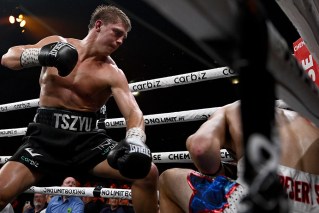‘She sacrificed her life for two kilos’: Weight cutting in combat sports

Jessica Lindsay (third from left) died from dehydration while preparing for a bout.
A sports combat doctor has warned the practice of weight cutting will claim more lives if it continues to go unregulated.
The practice, which is common among combat sport athletes, involves people quickly losing between five to 10 per cent of their body weight before competition.
It’s been widely publicised in professional sports including boxing, more recently when former welterweight champion Jeff Horn weight cut before his fight against Gary Corcoran, losing some 4.1 kilograms before the bout.
Mixed martial arts (MMA) fighters Conor McGregor is also renowned for dramatic weight loss in the lead-up to fights.
Here’s a look at how it works, and its impact on the human body.
Why do athletes do it?
It’s carried out through dehydration, usually with the aim of competing in a lower weight class.
Typical methods include restricting water intake and sweating in saunas, hot baths and layers of clothing.
Last year, MMA fighter CJ Hancock revealed he had died inside the ring, but was revived.
His heart had stopped and he had suffered kidney failure after a “hard weight cut”.
In 2015, MMA fighter Yang Jian Bing died after suffering complications from attempts to lose weight, and last year Muay Thai fighter Jordan Coe died in Thailand before a fight, believed to be from heatstroke.
Mother says more fighters will lose lives
Last year, Perth teenager Jessica Lindsay died while preparing for a Thai boxing bout.
Her death is expected to be the subject of a coronial inquest.
Jessica’s mother Sharron Lindsay has warned more fighters will lose their lives if tighter rules are not established.

Jessica Lindsay (right) “sacrificed her life for two kilos”, her mother said.
“She was still shadow-boxing. She was still talking. She was fatigued but she was still holding a conversation and then she just collapsed,” Ms Lindsay said.
Ms Lindsay said her daughter was instructed by people in her boxing gym to dehydrate her body to lose weight.
“She was given a program that was called ‘water loading’,” Ms Lindsay said.
That is a weight-cutting technique where fighters increase their water intake before dramatically restricting consumption days or hours before competition.
“She followed it to a tee and didn’t make it to the weigh-in that day,” Ms Lindsay said.
“Jess was one-and-a-half kilos out from making weight. She sacrificed her life for two kilos.”
Ms Lindsay said her daughter would never have practised weight cutting if she knew of the dangers.
“She thought that weight cutting is what happens. It was absolutely normal and that’s what everyone in our gym did,” she said.
“She’s more than the sport, but the sport is what took her.”
Doctor’s warning
Dr Paddy Golden, who has worked with combat sport athletes for more than 10 years, said he warned the Combat Sports Commission in Western Australia about the risk of weight cutting before Jessica’s death.
“They didn’t reply to my email,” Dr Golden said.
“A teenage girl died and they said essentially it’s not their fault.”
Unless regulation is put in place to stop weight cutting, Dr Golden said deaths like Jessica’s were “inevitable”.
“There will be more injuries. There’s undoubtedly going to be more deaths,” he said.

Conor McGregor is renowned for rapid weight loss before fights. Photo: AAP
Despite the calls, many athletes are carrying out the practice, and continue to do so each time they compete.
Steve Brown, a former judo Olympian who is now an MMA fighter, said he had cut weight “150 to 180 times”.
He explained he had “made mistakes weight cutting”, including passing out in a sauna, but had since become more aware of the danger.
Sauna sessions
“I remember a friend of mine basically dragging me out the sauna and threw a bucket of water over my face,” Mr Brown said.
“Can it be dangerous? Sure. Should it be dangerous? It doesn’t need to be.”
According to the Australian Institute of Sport, “acute weight loss strategies” of “2 [to] 3 per cent of a hydrated body mass in the two to three days before competition weigh-in should be tolerated by most athletes, especially if employed against a background of good nutrition and hydration practices”.
The AIS website states it is “strongly recommended that athletes involved in weight category sports seek the advice of a suitably qualified sports dietitian to individualise their weight management plan, and short-term weight-making techniques”.
However, for Sharron Lindsay, the dangers are still prevalent and she hopes no more families lose a child to weight cutting.
“We needed regulatory change years ago,” she said.
“The reality is that if it can happen to Jessica, it can happen to absolutely anyone.”
The ABC has contacted the Combat Sports Commission in Western Australia for comment.








